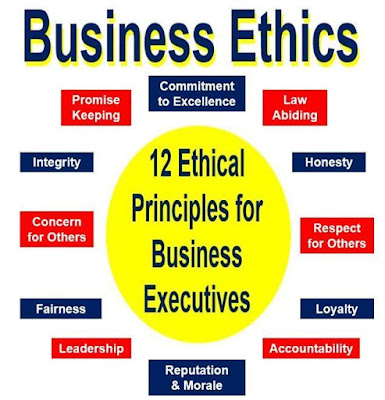Social Responsibility Perspectives: The Shareholder and Stakeholder Approach
An outline of the two perspectives related to corporate social responsibility: the shareholder model and the stakeholder model. The discussion also includes support for each perspective, including that of famous Nobel prize winning economist Milton Friedman.
It was Milton Friedman, the famous nobel prize winning economist, who once said there is
0:12
one and only one social responsibility of business—to use its resources and engage
0:18
in activities designed to increase its profits so long as it stays within the rules of the
0:23
game.
0:24
Friedman's comments characterize one of two perspectives related to business social responsibility.
0:30
On one hand we know that the primary objective of a business is the attainment of profits.
0:36
But does that mean that profits are the only factor that business managers should consider
0:41
when making decisions?
0:43
Before we go into greater detail on the different perspectives related to social responsibility,
0:48
lets define the term.
0:50
Social responsibility can be defined as a businesses obligation to make decisions that
0:55
ultimately benefit society.
0:57
The issue that I'm sure you're beginning to realize, is how does a business engage in
1:02
actions that benefit everyone?
1:04
This is a very difficult task, however business managers must be able to balance these competing
1:10
interests.
1:11
But lets get back to Friedman and the shareholder model.
1:15
Friedman felt that business social responsibility was pure and unadulterated socialism, and
1:20
even compared businesses that engage in social responsibility efforts to government institutions.
1:27
So why is Friedman so adamantly opposed to social responsibility?
1:31
Well there are in fact a few different reasons.
1:35
First lets take a look at how most large businesses are structured.
1:39
For liability and financing purposes, many large businesses are structured as C-Corporations.
1:45
Now the only thing you need to know about C-Corporations to understand Friedman's argument
1:50
is their composition.
1:51
The key parties of C-Corporations include shareholders, the board of directors, and
1:56
corporate officers.
1:58
The shareholders are those individuals who invest their money in the company in exchange
2:02
for a percentage of ownership and typically voting rights.
2:05
This makes shareholders the actual owners of the company.
2:09
Since shareholders doesn't necessarily have the time or expertise to make company decisions
2:15
they elect the board of directors, who appoint corporate officers to manage the day-to-day
2:19
operations.
2:21
And since shareholders, who again are the owners, can't make the decisions it's the
2:25
responsibility of the corporate officers to make decisions that are in the best interests
2:30
of the shareholders.
2:31
And what is more important to shareholders than profit?
2:36
So it is the responsibility of a corporate executive to make as much money as possible,
2:41
while of course operating within the rules of the game, which refers to established laws.
2:46
Now engaging in what is termed social responsibility is in direct conflict with the shareholder
2:52
model because it diverts resources and energies away from profit maximizing behaviors.
2:59
Take for instance giving to a charitable organization.
3:02
Friedman isn't arguing against donating to your local church, but he is arguing that
3:07
a business is not the appropriate vehicle to do it.
3:11
For one, finding a cause that all of its shareholders agree with would be nothing short of a miracle.
3:18
And secondly, by spending energies and resources on social responsibility the business is giving
3:23
up those alternatives that it may have otherwise engaged in.
3:28
Those alternatives may produce more of a benefit for the business.
3:32
Instead Friedman believed that businesses should pursue profit maximization, essentially
3:37
making as much money for shareholders as possible, and with that extra cash shareholders could
3:43
donate to whatever organization they wish.
3:47
Friedman's views of course represent just one of the two perspectives related to social
3:51
responsibility.
3:52
The second perspective is known as the stakeholder model, and maintains that businesses have
3:57
a responsibility to not only seek profits, but to also satisfy the interests of multiple
4:03
stakeholders.
4:04
These stakeholders represent individuals or groups that have an interest in the actions
4:10
and behavior of the business.
4:12
The idea behind the stakeholder model, is that business managers need to maintain a
4:16
positive relationship with society and their environment if they are to operate effectively.
4:22
Failure to do so can harm a businesses reputation and ultimately affect their ability to operate.
4:28
Now since all stakeholders do not have the same influence on an organization, we commonly
4:33
separate them into two categories: primary stakeholders and secondary stakeholders.
4:40
Primary stakeholders represent those individuals or groups who have a greater influence on
4:45
the organization.
4:46
They include a business's customers, employees, investors, suppliers, government agencies,
4:53
and the local community.
4:55
These groups are of utmost importance because the business relies on them for long-term
5:00
survival.
5:01
Think about the impact on a business if its customers stopped buying products, or investors
5:06
withdrew their investment.
5:08
Under the stakeholder model, business managers top priority should be satisfying the various
5:13
interests of these groups.
5:16
Although secondary stakeholders are not as critical as primary stakeholders, they still
5:21
can influence public perception of the business.
5:24
Common secondary stakeholders include special interest groups and the media.
5:29
These groups don't conduct business regularly with the organization, but what they communicate
5:34
or choose to communicate can have an impact on public perception.
5:39
Just look at the efforts that oil and gas company British Petroleum has gone to in order
5:43
to repair its battered image in the wake of the Deepwater Horizon oil spill.
5:47
Although the criticism was certainly warranted, special interest groups and media played a
5:52
significant role in transmitting information related to BP's decisions that led to the
5:56
explosion and subsequent oil spill.
5:59
Now that we've outlined both the Shareholder and Stakeholder Models, and as we finish up
6:03
this video, I want to leave you with a parting question.
6:07
Should business managers subscribe to the shareholder model or stakeholder model ? Perhaps
6:12
a better question is If you were the business manager making the decisions, which model
6:17
would you follow?
6:19
If profitability is a businesses objective than is it wrong to make decisions with that
6:24
objective in mind?
6:26
Although you could certainly make the case that cutting costs to boost profits in the
6:30
short-term didn't benefit BP in the long run.
6:34
So maybe acting socially responsible is less about being socially responsible and more
6:40
about being profitable.
6:42
It could be that being socially responsible is in fact good for business, and not pure
6:48
and unadulterated socialism as Milton Friedman suggests.
6:53
Even if business managers only consider the interests of stakeholders for the incentive
6:57
of profits, doesn't everyone win?
7:00
Let us know what you think in the comment section below.
7:03
And while your leaving that comment, go ahead and click the like button, assuming of course
7:07
that you enjoyed this video.
7:09
And remember to subscribe to Alanis Business Academy to have our latest videos sent to
7:13
you while you sleep.
7:15
Thanks for watching.




Nhận xét
Đăng nhận xét